Yesterday, I spoke to British artist Tomas Watson, whose new exhibition of artwork, entitled: Kormos: Form and Transformation begins today in Sigri, on the island of Lesvos.
For Tomas, the Greek word "kormos" in the exhibition title carries significance as it is used here to mean “trunk, torso, and core". Whilst "trunk" in English has narrower meaning, for this purpose “kormos” captures more than one aspect of a physical form.
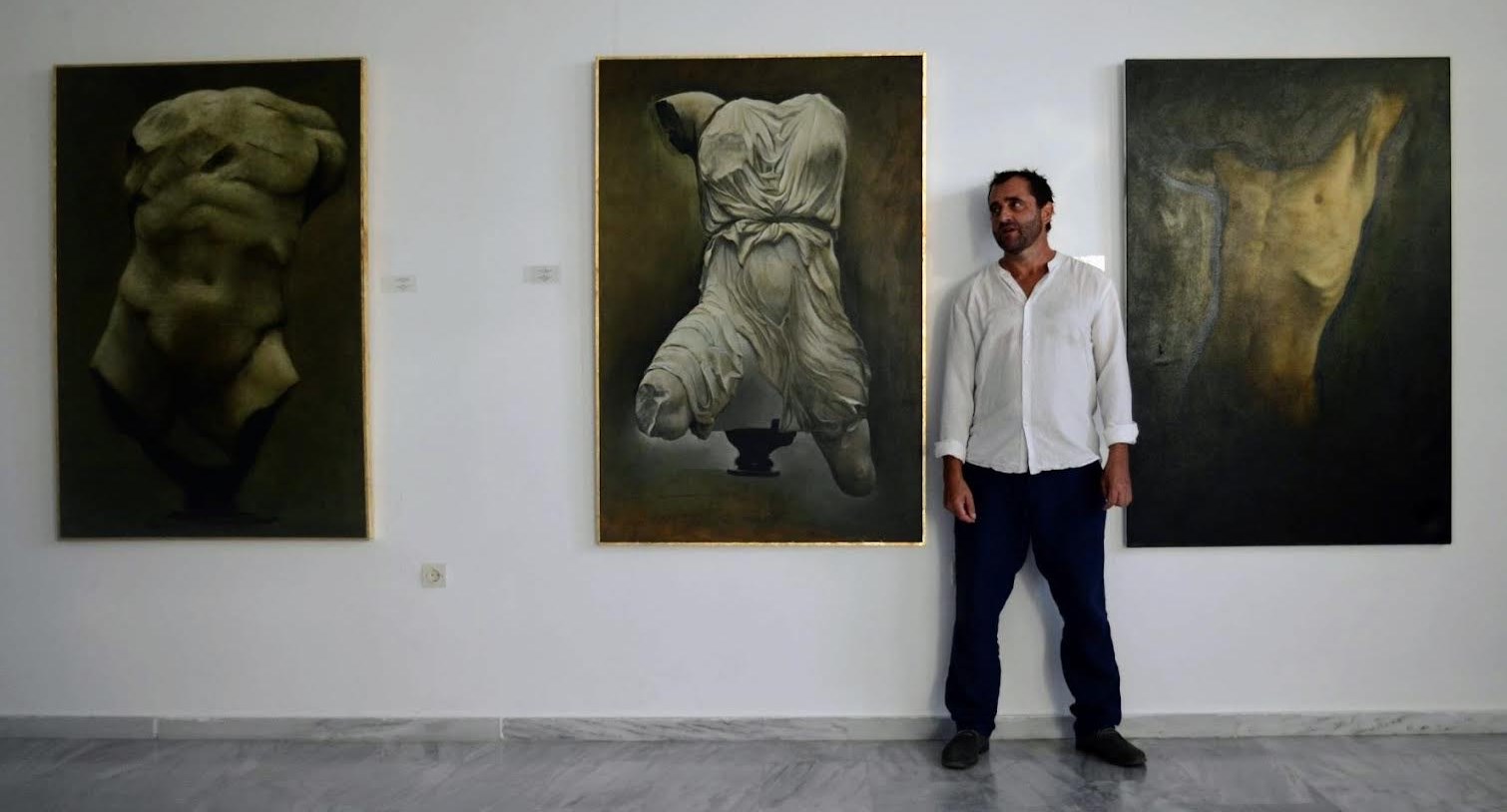
A former student of The Slade School of Fine Art, Tomas received a Greek government scholarship to come and paint in Greece and has been living there since 1994. “What drew me to Greece was the light.” he explains. He has lived in Athens, the islands of Astypalaia, Andros, and Lesvos, where he runs the painting and creative writing retreat, he recently founded with his partner the writer, Efrosini Camatsos.
In 1998, Tomas received the BP award for a self-portrait and composition set within a colourful Dodecanese kitchen on the island of Nisyros, where he was staying at the time.
On the back of his BP win, a portrait of the novelist and philhellene John Robert Fowles was commissioned and put on show at London’s National Portrait Gallery in 2001.
Tomas remembers the sitting well, “I happened to be reading The Magus, which moved me. He was always jotting notes in his little notebook whilst I was painting him, and sometimes would doze off. One of these times, his notebook fell off his lap, and as I picked it up, I saw he had been writing about me: “T.W.: your dark eyes, cautious to comment.””
Tomas’s aim for the current show is for it to travel, to be seen widely in Athens and beyond.
The show consists of forty-one works. It ranges from drawings in charcoal, ink, pencil, and gouache, etchings, and collage, to oil on canvas. The smallest work is 24 x 30 cm, and the largest 150 x 200 cm. Eighteen of the forty-one works are of the Parthenon Marbles.
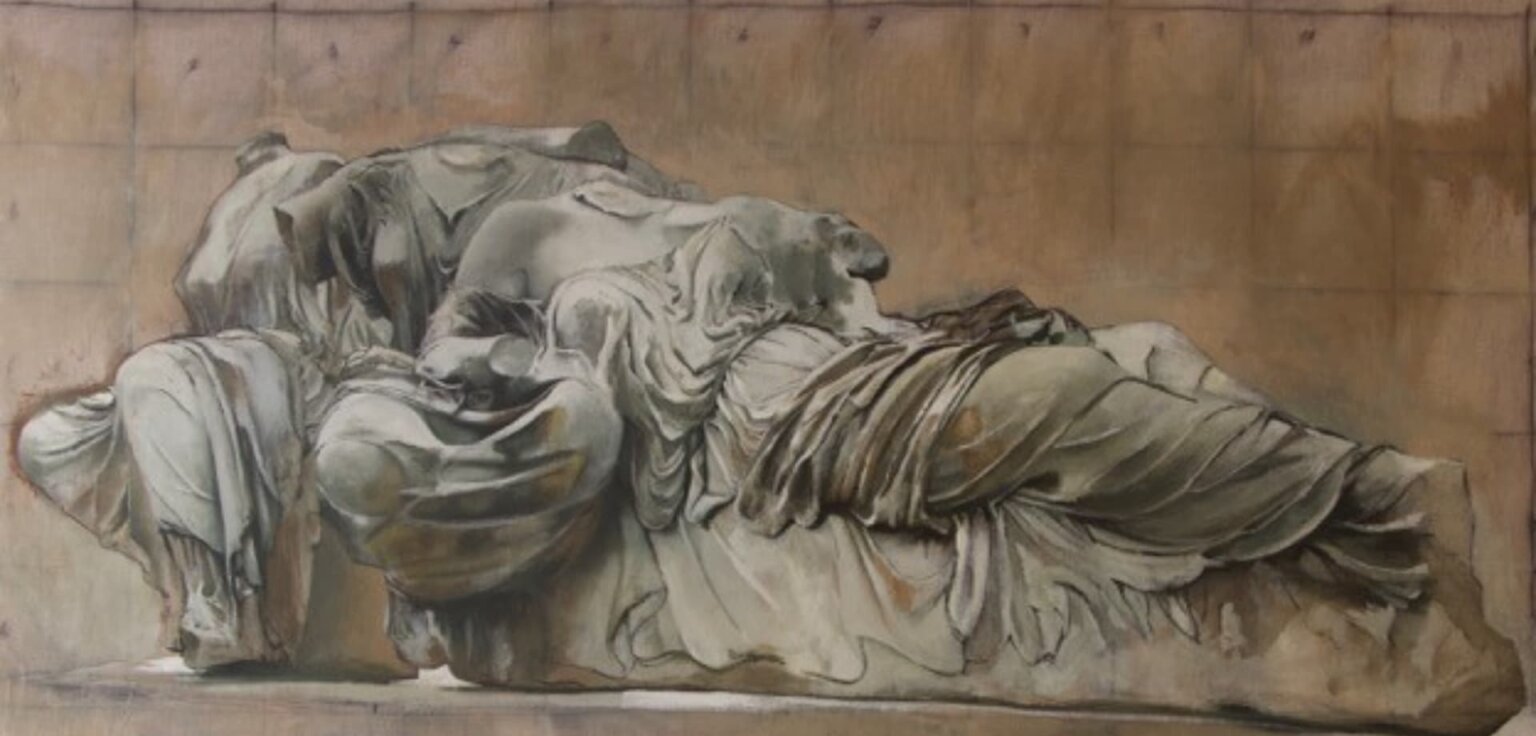
“The images have been arranged to create dialogue between differing forms,” he says.
The painting of Hermes (figure H, west pediment) hangs next to a painting he made of a male torso from a live model in a similar position to the statue and is next to an ink drawing of a petrified trunk.
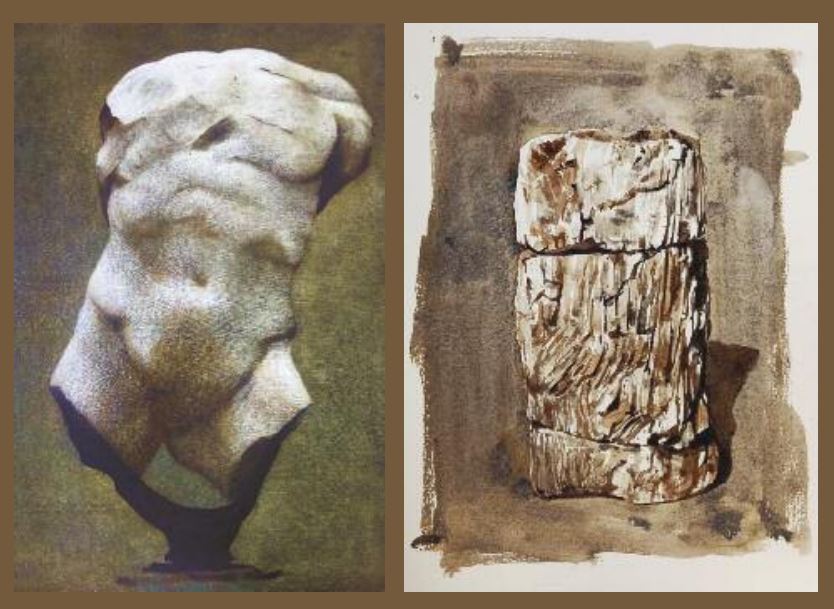
The rising goddess painting (figure K, east pediment) has been placed next to a painting of a seated woman in rich drapery.
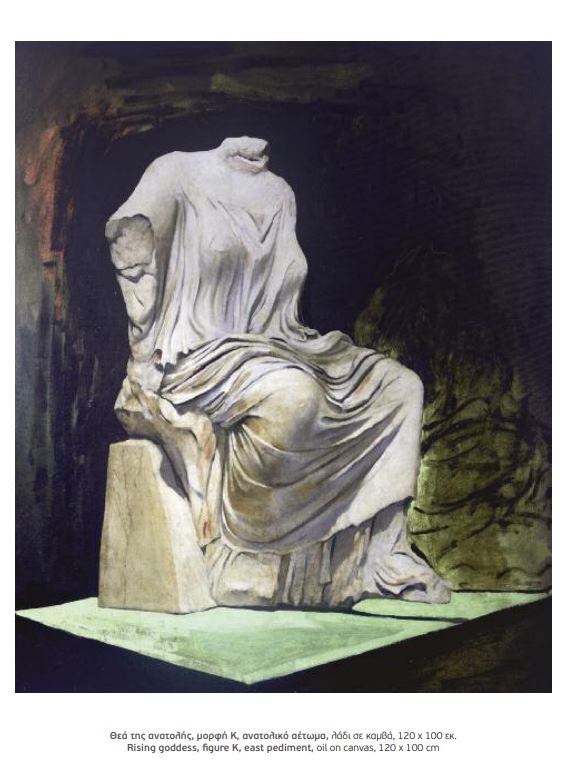

On the inspiration behind these artworks, he further explains:
“I happened to be in London for three weeks in February 2020 and decided as I couldn't work in the house I was staying in, I would draw from sculptures in museums, as I used to do when a student at The Slade. I started with the Horse of Selene and continued with several of the Parthenon Sculptures. I photographed the sculptures which interested me visually, then, Covid hit, and I had to return to Greece.
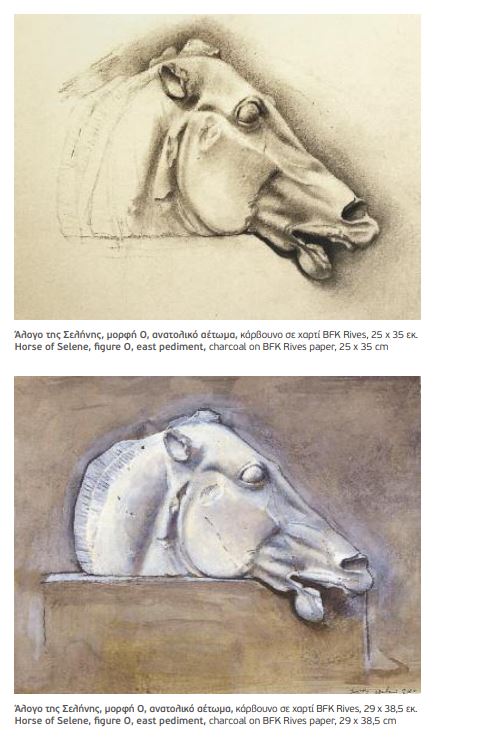
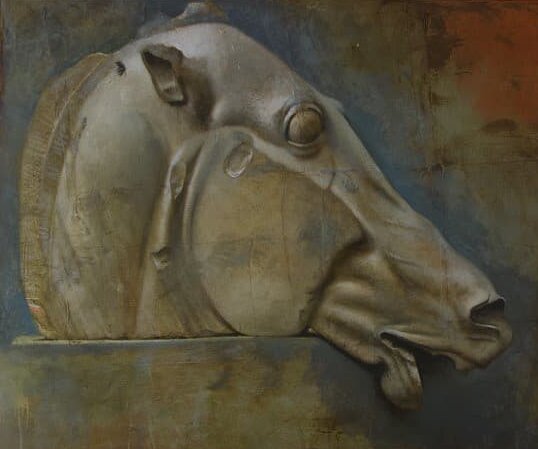
During the severe lockdown that followed, I continued working on the studies I had started in charcoal, gouache, and tempera, and also began much larger works in oil on canvas or linen. Initially, what drove me to do this was a need to return to an aesthetic, which has been buried under the weight of uninspiring contemporary art, but which I feel is becoming more valid and needed.
While doing these pieces over a period of two years, it became clear to me that in my own small way, as a British artist and in a symbolic sense, I was "returning" the marbles to Greece.
My work throughout my career has largely been based on the human figure. I have always painted human bodies; however, not in their entirety. I have concentrated on the part that I am particularly interested in – the torso, the back, shoulders, and often in the form of studies or fragments. So, when the Natural History Museum of the Lesvos Petrified Forest approached me to do an exhibition, the theme organically came about. Whether it is petrified trunks of trees, fragmented torsos of marble sculptures, or my own studies from live human models, I found that I treated the subject in the same manner.”
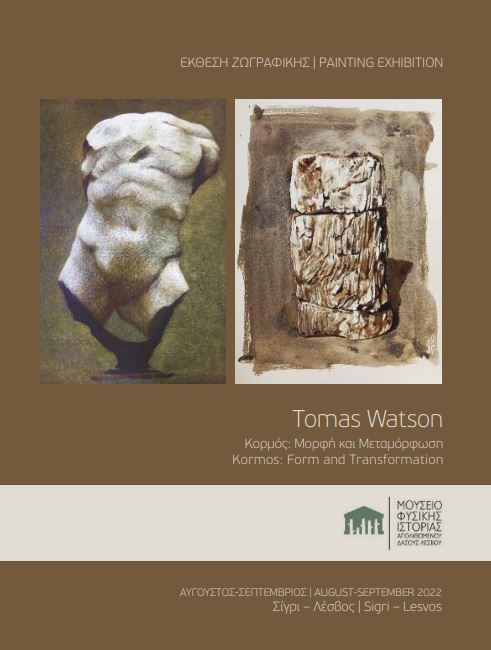
To view the exhibition brochure, follow the link here.
Tomas Watson is represented by London’s Jill George Galleryand Accesso Galleria, Tuscany.
Kormos: Form and Transformation opens August 26, 2022, at the Natural History Museum of the Lesvos Petrified Forest.
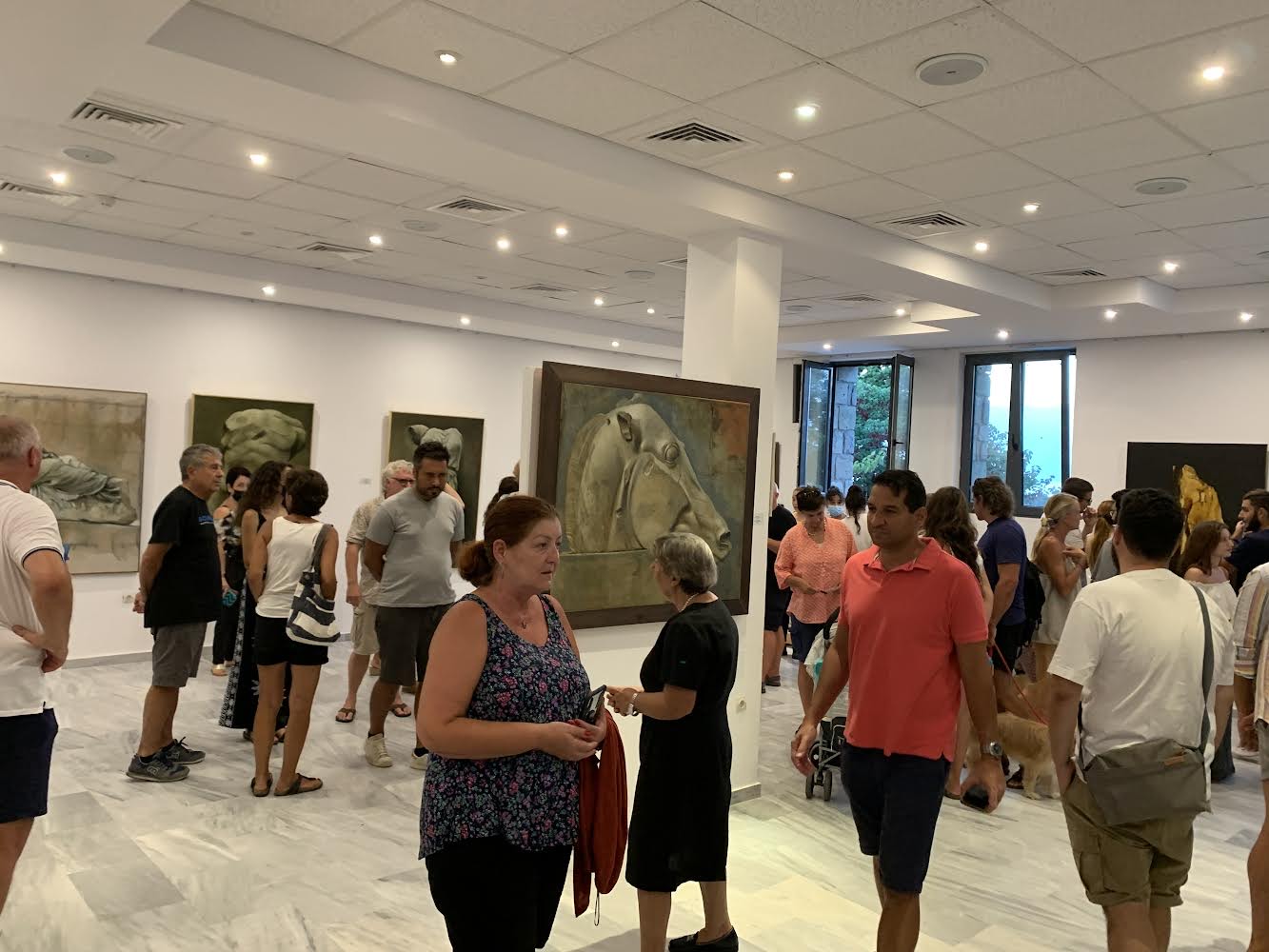
For details, visit lesvosmuseum.gr
For information about the retreat, visit sigriartsretreat.com
Interview by Christina Borg for BCRPM
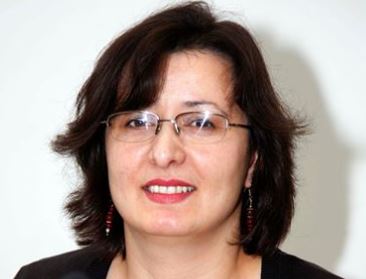
Instagram borg_sketches and subscribe to Christina Borg's newsletter on borgs.substack.com